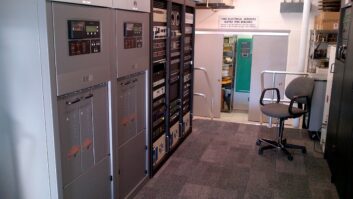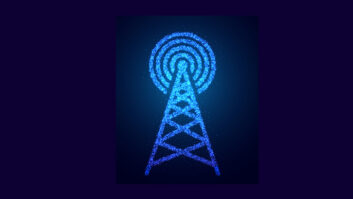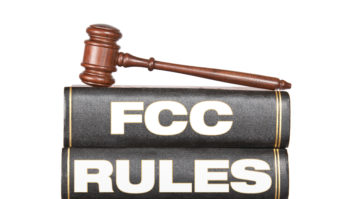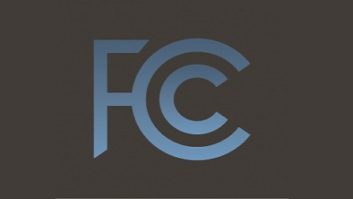FCC Chairwoman Jessica Rosenworcel says the FCC plans to “incentivize innovation and experimentation in the amateur radio bands” by getting rid of outdated restrictions and providing licensees with the flexibility to use modern digital emissions.
The commission at its November meeting is expected to take action on a Report and Order that would eliminate the baud rate limitation and establish a bandwidth limitation in the amateur radio bands below 29.7 MHz.
The order being circulated for tentative consideration by the commission would remove the baud rate limitation — the rate at which the carrier waveform amplitude, frequency and/or phase is varied to transmit information — for data emissions in the amateur radio bands, the FCC says. The current baud rate limits were adopted in 1980.
The order would implement a 2.8 kilohertz bandwidth limitation in place of the baud rate in amateur radio bands. The 2.8 kHz limitation is consistent with the commission’s treatment of other wireless radio services, the FCC says.
The current rules limit the baud rate for high-frequency amateur radioteletype/data transmissions to 300 baud for frequencies below 28 MHz (except in the 60-meter band), and 1200 baud in the 10 meter (28-29.7 MHZ) band.
The Wireless Telecommunications Bureau says the change in technical standards would allow the amateur radio service to operate more efficiently, including during times of emergency to support public safety.
The American Radio Relay League (ARRL) in 2013 asked the commission to delete references to the baud rate and to establish a bandwidth limitation of 2.8 kHz. The group argued the public safety benefits of making the change. ARRL stated: “[i]ncreasing speed is especially important when amateurs voluntarily assist during and after hurricanes, forest fires and other disasters.”
At the time, ARRL also told the FCC that eliminating the baud rate limitation will “incentivize innovation by allowing more data to be transmitted within each signal without increasing bandwidth from that currently used.”
A spokesperson for ARRL says the organization supports the proposed action and the proposal of further notice.
In a subsequent Notice of Proposed Rulemaking in 2016 (WT Docket No. 16-239), the FCC tentatively concluded that a 2.8 kilohertz bandwidth limitation for radioteletype and data emissions in the MF/HF bands was not necessary, and sought comment.
[See Our Business and Law Page]
A few commenters at the time of the NPRM opposed any rule change, arguing that the existing rules should be retained in order to protect access to amateur bands by Morse code and other narrowband transmissions.
However, the commission writes in the order: “Based on the record in this proceeding, we find that the baud rate limitation has become outdated and hampers, rather than promotes, innovation and robust use of the amateur bands.”
The commission continued in the new order: “We are persuaded by the weight of the record in this proceeding that, without a baud rate or bandwidth limit, data stations using a large amount of spectrum for a single emission could do so to the detriment of simultaneous use by other stations using narrowband emission modes.”
In essence, the technical change mean amateurs will require less time to transmit messages, which in turn will open up more spectrum in the time domain for more amateurs to use, said David Siddall, general counsel for ARRL.
“This is a very simple change. In 1980, at the inception of digital technologies that could be used by radio amateurs, the FCC adopted a speed limit of 300 baud for the stated purpose of limiting the amount of spectrum occupied by any single signal,” Siddall said. “Radio amateurs, being tinkerers and experimenters, worked to develop faster and faster speeds that still fit within the standard spectrum bandwidth. Eventually their innovations to the technology significantly increased spectrum efficiency but ran up against the FCC baud rate limit.”
One of the benefits of the changes will be allowing for “faster emergency communications” by volunteer ham radio operators during emergencies, the FCC says.
The agency says its Wireless Telecommunications Bureau’s Mobility Division has previously issued waivers allowing amateur operators directly involved with disaster relief efforts to exceed the baud rate limitation in the interest of public safety.
The FCC at its November meeting will also consider a Further Notice of Proposed Rulemaking (FNPRM) that proposes to remove the baud rate limitation in the 2200 meter and 630 meter bands. The commission also proposes to remove the baud rate limitation in the very high frequency (VHF) and ultra-high frequency (UHF) bands.
The commission says it expects to seek comment on the appropriate bandwidth limitation for the 2200 meter band, the 630 meter band, and the VHF and UHF bands.
Steve Stroh, editor of amateur radio newsletter Zero Retries, says the need for improved data communications in amateur radio also coincides with spectrum becoming more “noisy” due to “pollution” by systems such as LED lighting, small switching power supplies and even solar panels.
“That noise has an outsize impact on analog modes such as voice and very low power transmissions. Improved data communications modes, including digital voice modes, can overcome the noise issues,” Stroh said in an email to Radio World.
Stroh says he is happy to see the FCC address the same limitation on the amateur radio VHF and UHF bands — where there is arguably much greater potential for technological innovation in data communications technology — if it wasn’t for the data rate and mode limitations.
“Fortunately, in its proposal, the FCC recognizes that the symbol rate and mode issue does include the Amateur Radio VHF and UHF bands. Thus the FCC’s proposal is a very good one that will significantly benefit Amateur Radio,” he said.
The FCC’s next meeting is scheduled for November 15. A comment period on the FNPRM will commence 30 days after the date of publication in the Federal Register.







